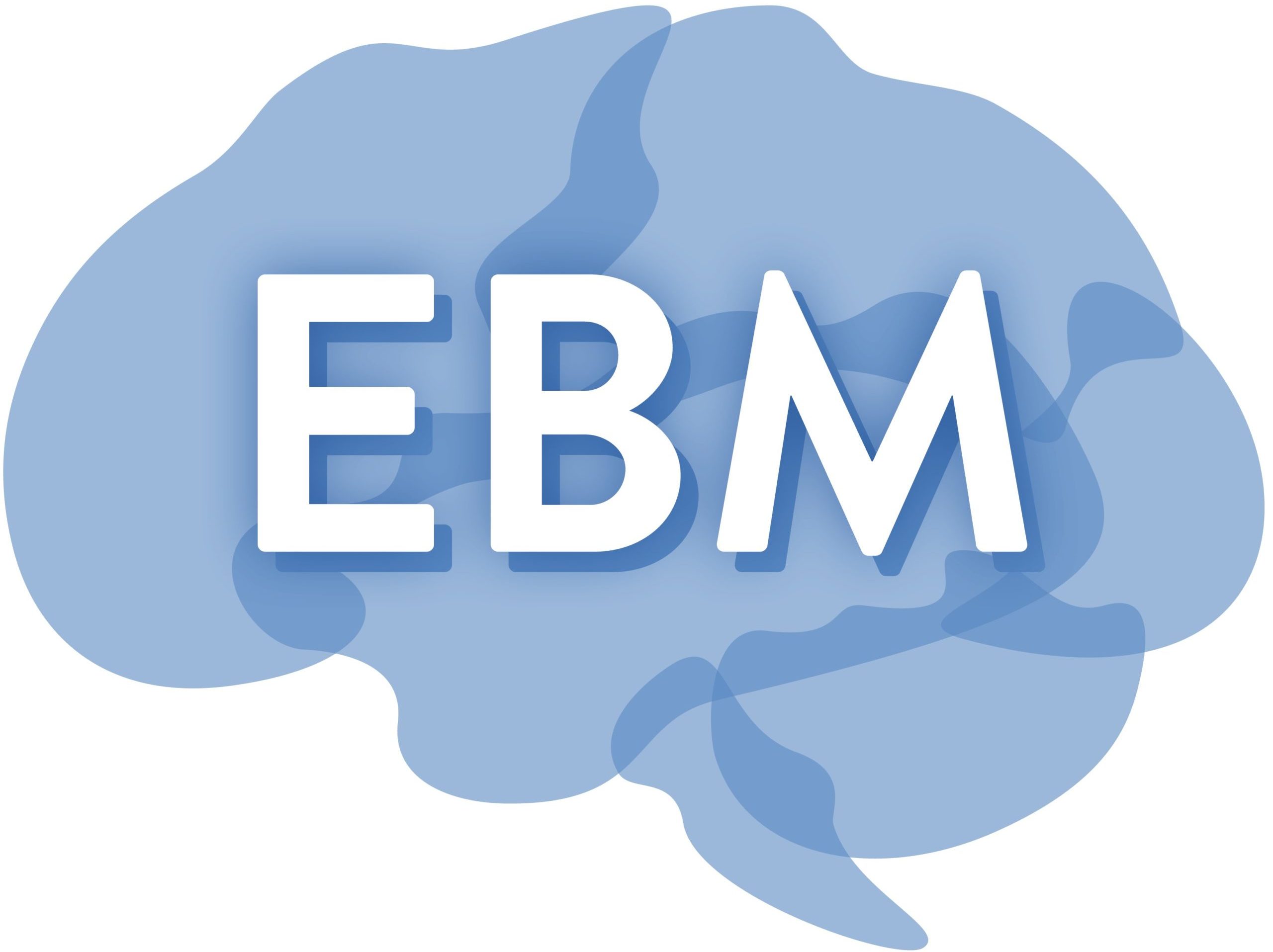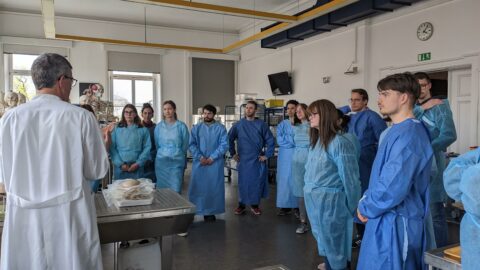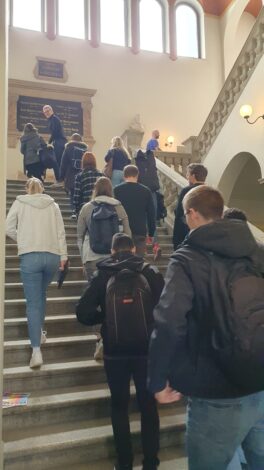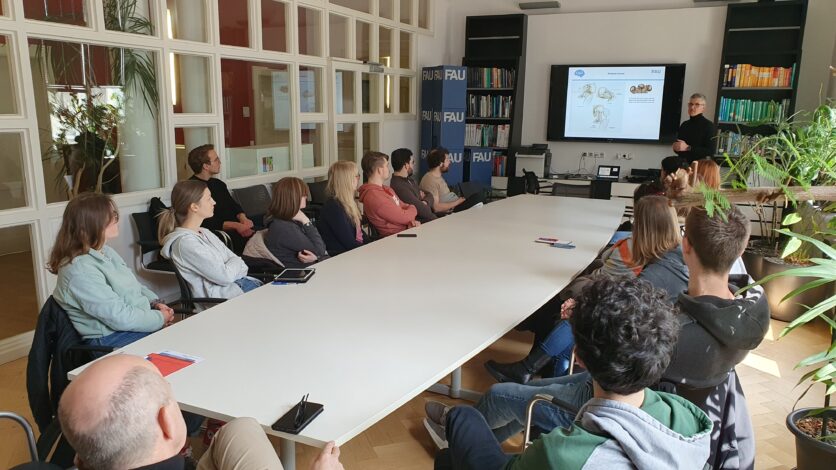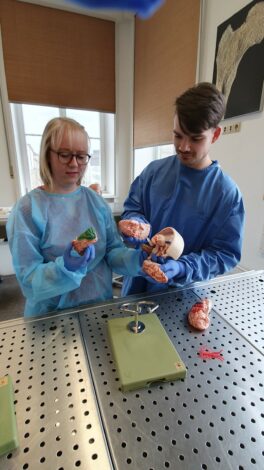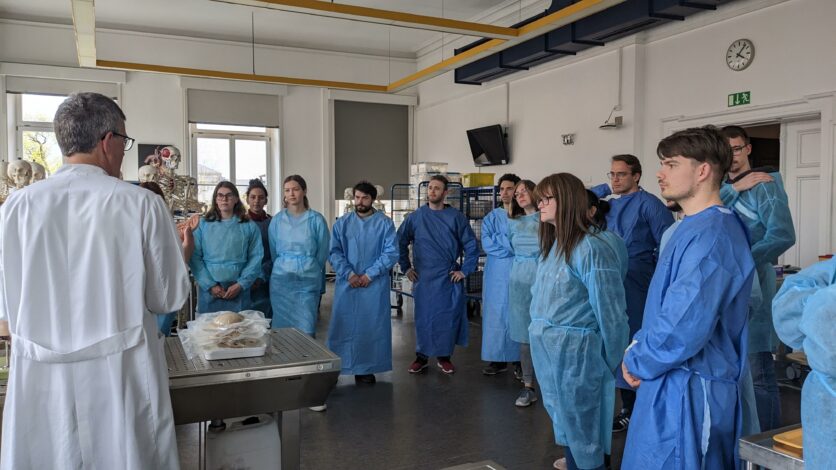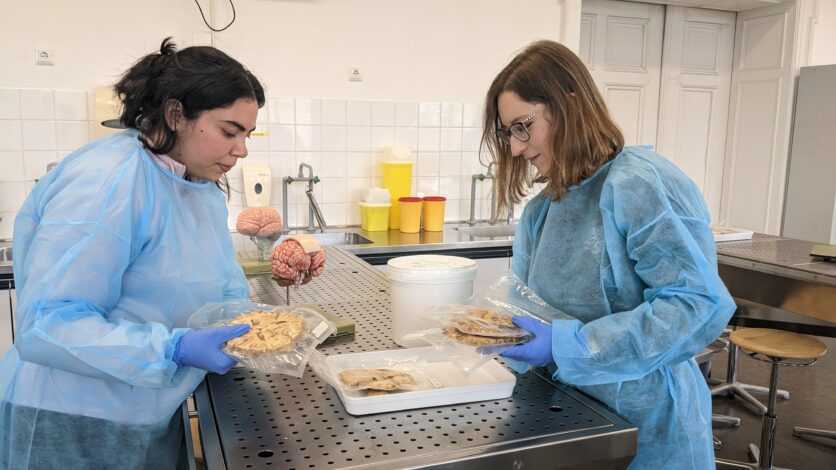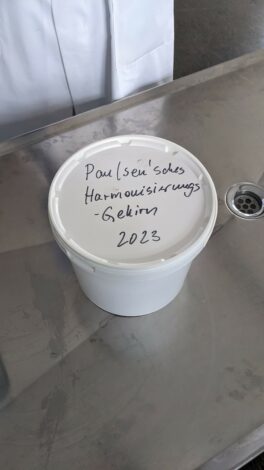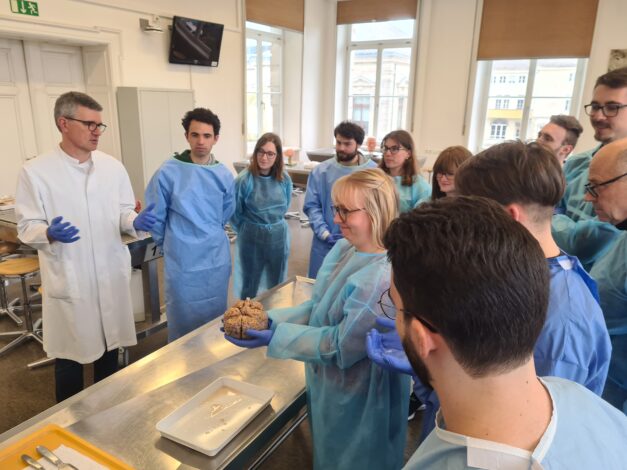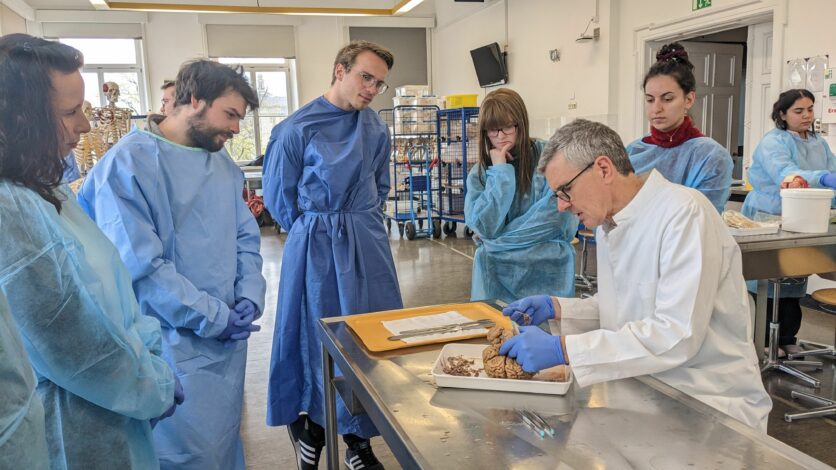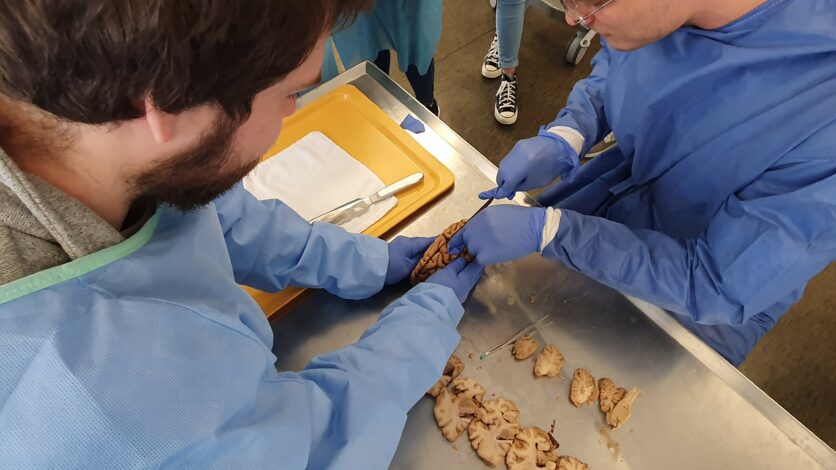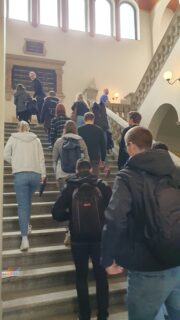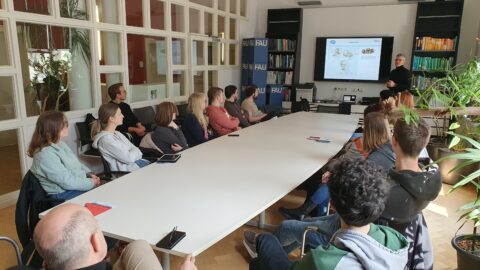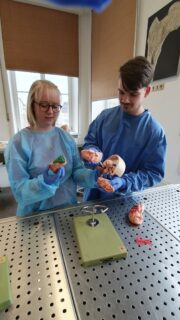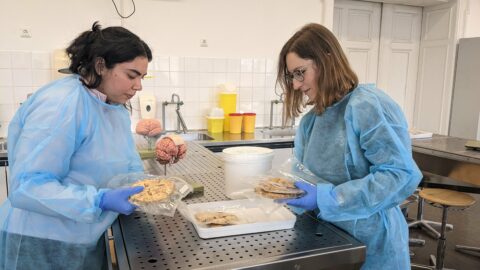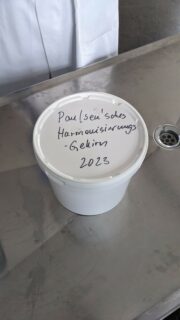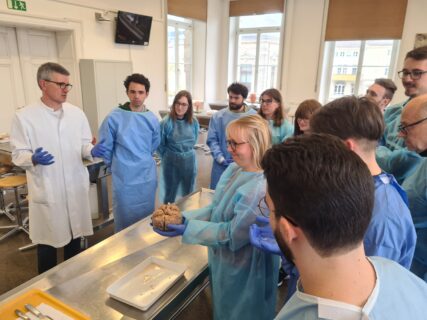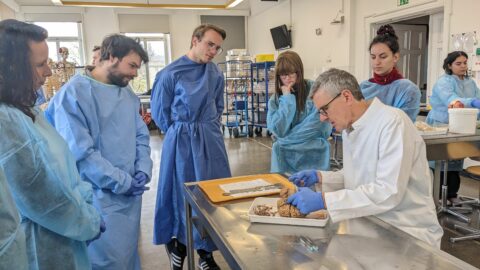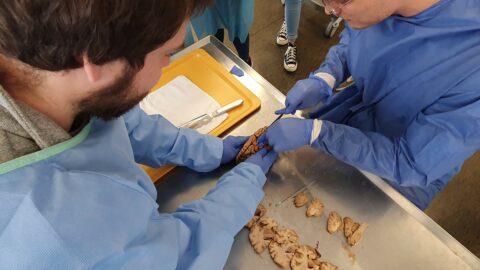Experiencing Neuroanatomy Firsthand: Exploring the Wonders of the Human Brain
It has long been an object of immense fascination, be it due to the pure intrigue of mystery or the mere magnanimity of its functions; the brain remains an area of constant research and probe. As an engineer working on exploring this unknown subconscious, I had only a very basic idea regarding its anatomy. This is where the first harmonisation workshop on 18th April led by Prof. Dr. Friedrich Paulsen helped elucidate my knowledge.
The workshop began with a brief seminar on neuroanatomy. The last I read about neurons was in 8th-grade biology or maybe a paragraph when studying neural networking courses in my master’s. But, I had never thought about their spatial arrangement in the brain and the interconnected network they formed overlaid with blood vessels. As light was shed on these matters, my attention was rapt at the slides. We deep-dived into (or as the doctors would say, “very lightly touched upon”) the various regions and functions of the brain. I knew it would be fascinating how this organ withholds an entire spectrum of responsibilities from power to emote to our ability to coordinate and carry out daily function; but, as we sat there, the room (now a sanctuary of information flow) became full of scientific rapture. The incredible intricacy of the organ with its complex structure and mechanisms is truly nothing to be paralleled. I could feel my fellow engineers and scientists get awed as Friedrich Paulsen laid down anatomical facts regarding the cerebral cortex to the brainstem.
This seminar was followed by an assisted brain dissection. Now, as an engineer (especially a simulation one), I had never personally thought that I would get an opportunity to look at an actual human brain. But there it was, a network of the brain lay there in our hands, waiting to be unraveled. Professor Paulsen pointed to the various regions, quickly recapping all we had studied in the hour before. I had seen diagrams and images and now to experience it in real life was surreal. My focus in this consortium lies on material modelling so to be able to feel the difference of materials of the various regions got me enraptured. I could not help but feel a deep sense of reverence for the human brain. The lab was equipped with previously dissected brains and anatomically accurate models that could help us get a better understanding and overview.
The workshop was concluded with a visit to the dissection lab. This experience was transformative as medical experts steered this journey, helping us form a concrete idea about human (especially brain) anatomy, my brain itched, probably laughing at the idea that it gets to explore its own functionality. I zoomed out a little to put everything into perspective. People had given their bodies to science and here stood an army of doctors, scientists, and engineers that dedicated their resources to trying and understanding the processes that make us who we are and helping the world one day at a time. It put into perspective the unique opportunity we have with this project to work collaboratively towards helping decode neurological processes.
Yashasvi Verma (doctoral researcher in project X01)
